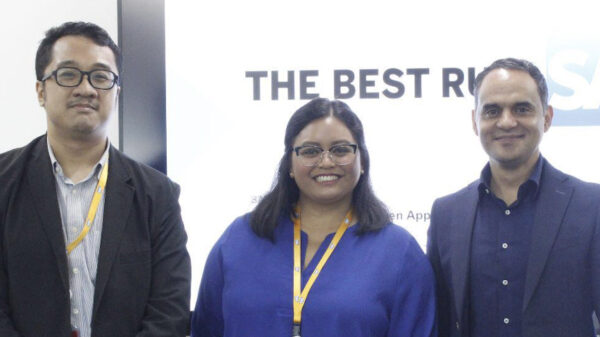By Ryan Poggi
Country Managing Director, SAP Philippines
What do “Asia’s Got Talent”, “Asian Idol”, and “The Voice” all have in common? …The ability to attract amazing talent who participate in these competitions to kick start their careers.
Unfortunately, the same cannot be said for many companies who are seeking to attract global talent in the workforce.
In fact, according to ManpowerGroup’s 11th-annual Talent Shortage Survey, the global talent shortage is at its highest since 2007 – some 40 percent of employers globally report that they are experiencing difficulty filling jobs. Coupled with the challenge of an aging population, it is of little wonder that 46 percent of employers in Asia Pacific – the highest globally – reported difficulty filling jobs.
In the war for talent, small and medium enterprises (SMEs) have traditionally come across as the poorer cousins of multi-national corporations (MNCs) given their budgets. In fact, Asian Development Bank (ADB) noted in a recent study * that access to financing remains a challenge for SMEs in developing countries. In fact, Philippine SME loans (equivalent to 3.1 percent of GDP) is the second lowest in Southeast Asia, next to Myanmar’s 0.1 percent, lagging well behind their neighbors in terms of SME loans to a total of 10.3 percent.
This issue, combined with the lack of resources to identify, train, and retain top workers often lead to a struggle in the battle of talent acquisition.
However, today, with the help of technology, that is slowly changing.
The economic backbone of most economies across Asia Pacific, many SMEs are looking to leverage tools and solutions to overcome barriers in human resource to win in today’s digital economy – from efficiently managing and growing teams, to attracting new talent.
Auditioning ‘rock star’ new talent
Hiring the right person, with the right skill and one that will fit into the organizational culture is always a challenge, but the right person can have a measurable impact on business performance of the company. Recruitment today is complicated with a multitude of sourcing avenues – from employee recommendations, student applications to cold calls from around the globe.
Online talent platforms are a valuable source for people to identify opportunities that closely align with their skills and help overcome the talent shortage. These platforms can not only help build talent pipelines, but enable effective engagement with active and passive candidates. It can also shorten the time and cost it takes to hire. Furthermore, there is an opportunity to gather data and insights into the demand for specific skills to enable recruiters to make decisions about training, upskill existing employees and also make strategic decisions about future growth requirements.
Millennials – those born between 1979 and 2000 – have become the largest generation in the workforce today. With very different expectations. Cloud-based talent management platforms not only help identify and recruit these candidates, it helps motivate them, improve their productivity and identify new skills to learn once they start work. According to McKinsey research, these platforms could help boost global GDP by $2.7 trillion by 2025.
Retaining and managing existing talent
The cost of a bad hire is higher for SMEs. This leads to a potentially more feasible option being to train and reskill the existing workforce, and help employees improve and succeed with ongoing feedback and coaching.
Effectively managing employee performance has never been more critical. SMEs need a workforce that clearly understands strategic business objectives to grow, expand and quickly adjust course as business needs evolve. It is not just about creating SMART (Specific, Measurable, Attainable, Realistic, and Timely) goals, but a continuous ongoing dialogue between manager and employee about performance. This not only enables organizations to identify top talent, but also aide in their continued motivation, growth and success, which ultimately leads to organizational success.
A transformative approach to HR puts people first and provides employees with an overall experience that is both engaging and motivating. The strategic use of technology can help identify talent gaps in the organisation and better manage existing talent. By doing so, it gives SMEs the foundation to sing loud and proud on a global stage and enable SME business owners to be the overall winner in the competition for talent.





















































































































